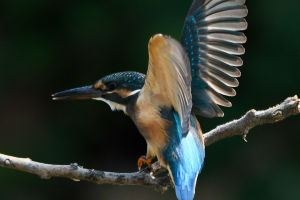Since humans moved from the forests into the "concrete jungle," our relationship with trees seems to have become increasingly unfamiliar, even though traces of them are everywhere in our daily lives:
the verdant shade provided by street trees, the wooden bookshelves, floors, tables, and chairs in our homes, and even a book, a sheet of paper, or a pencil. These "gifts from the trees" connect us to nature and serve as "secure passages from one world to another."
Fiona Stafford, a literature professor at the University of Oxford, wrote about a myriad of ordinary trees in her book "The Long, Long Life of Trees." She delineates 17 types of trees, including the redwood, cherry, hawthorn, olive, and apple trees. To Fiona, these trees are not just botanical entities; their significance resonates with history and folklore.
It is said that there is a redwood tree by the Thames River that was already present when the Magna Carta was signed in 1215, standing tall and silent, witnessing even the proposal of King Henry VIII to Anne Boleyn.
Then there are the olive trees, which grew alongside ancient civilizations, mentioned frequently in the Bible and classical literature.
Two thousand years ago, the Roman poet Catullus described the olive trees on the Italian peninsula, "You were born under the olive trees of the island of Drepanum, from now on, you rule over the verdant high mountain forests, hidden clearings, and murmuring glaciers."
In the 1900s, amidst the ruins, the British writer D.H. Lawrence stood on the same land and, through poetry, immortalized the olive tree before him: "In the bright summer sunshine, through the branches of olive trees... the silvery olive groves of Selinunto."
The ancient olive trees do not die; the hearts of poets live on. In Portugal, there is even an olive tree dating back to ancient Greece, over 2700 years old. In Italy, the story is even more abundant, with thousands of ancient olive trees scripting their annals. But not all ancient trees are so fortunate.
In Laytonville, California, there stands a millennium-old hollow redwood tree, which was hollowed out into a tunnel for road construction. This redwood tree persisted for 130 years but eventually succumbed to a storm in 2017.
Trees, ultimately, come to their end in due time. Hence, in this book, Fiona also writes about many "short-lived" trees.
The hawthorn tree, easy to grow and nurture, is one such example. Though it may not live as long as its relatives such as redwoods, olives, or oaks, it has its way. Every autumn, the hawthorn tree bears clusters of crimson berries, covering the entire tree with red beads, thus continuing its life within these berries.
The wax tree, even shorter-lived, barely survives 200 years, but it is indeed not renowned for longevity. Fiona says, "Wherever people live and work, the wax tree is an eternal companion and helper." Yes, the practicality of the wax wood is immense, with its wood suitable for crafting into canes, chairs, ladders, airplanes, and even cars; its leaves used to treat edema and gout; its bark used to nourish the liver and spleen, treat arthritis. It is a treasure trove, no wonder its lifespan is short.
Are there trees with even shorter lifespans? Unfortunately, the apple tree is one.
Fiona introduces it thus: "Apple trees often do not live beyond 30 years, they age rapidly even before their slow-growing British counterparts have truly begun to exert themselves. They age at a startling rate, becoming susceptible to unfortunate diseases such as apple rot and apple scab."
Of course, some apple trees manage to avoid an early demise, living to a hundred years old. By then, they are no longer deserving of the name "apple tree," for aged apple trees cease to bear fruit and begin to shed branches. Thus, it is akin to "people losing their teeth, their lifespan is unpredictable."
To prolong the life of apple trees, grafting is a good idea. British horticulturalist Bennett spent decades grafting, allowing one apple tree to grow 250 varieties of apples. Every summer, he nurtures new varieties and grafts them onto this apple tree in winter. Thus, under Bennett's skillful hands, this apple tree becomes a "family tree" and lives a decent life.
Once trees become associated with humans, they seem to acquire not just a natural age but also a social age. With her unique perspective as a literature professor, Fiona opens windows into the journey of observing trees for us. Such as the mysterious connections between ancient myths, folklore, modern medicine, and trees.
Silent trees, ever-growing, accompany the proliferation of humanity from one generation to another. Even when a big tree falls, it continues to nurture different forms of life. For instance, the flora and fauna on the forest floor can live off the nutrients provided by fallen old trees and even make homes within them. We say trees are the lungs of the earth; only with more trees can we humans breathe fresher air and live better lives.


